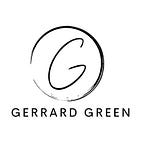How to Write a Structured Professional CV Header
A structured professional CV is a strict document. It does not use full sentences, it informs you quickly, concisely, and accurately about your education, experience, and skills. It also has the exact form that must be followed. You can separate each sequence with a solid line for clarity.
Structured professional CV header
The header is the same as in the context biography. It means the name “resume” in the first line in the middle. Place your full name, title, address, single phone number, and personal e-mail on the left side. You can learn more in the top Resume Header Examples.
The main part of a structured professional CV
The section on education and supplementary education follows. Always state the time frame of the study at the beginning of the line, then only the name of the school. Proceed from the last study to the first. Elementary school is not mentioned in the CV. It looks something like this:
Education
2001–2007 Faculty of Management, Harvard University
1996- 2001 John Doe Grammar School, London
1998- 2001 Language course…
1996- 1997 Secondary exchange program…
Keep the same adjustment for other parts. A professional CV, especially a structured one, requires maximum clarity.
Continue your work experience — also move from the present to the past. HR is interested in what you do now, not what you did ten years ago. The CV must show him what kind of job you got the job. Therefore, it is not enough to just state the function, your competencies are also needed. For example:
Work experience
2009- 2011 Name of employer
Position: project manager
Job description: project coordination, project phase planning, communication, reporting…
2007- 2009 Name of employer
Position: sales manager
Job description: sales team management
Mention all your job positions, try not to miss any time period. The missed years do not make a good impression.
Your CV also reveals your language skills. Mention all the languages you speak. Express your level of knowledge in terms of beginner, intermediate, advanced, and active speaker. In practice, this may look like this:
Language skills
Italian language — active
German language — intermediate
Computer knowledge is also a matter of course. Write down all the programs you are familiar with. Add your level to the scale: basics, advanced, expert.
The professional CV is closed by sections on driving license, characteristics, and interests. Again, focus on the personality assumptions that will be expected of you. Use this consideration in other ways as well. Critically evaluate whether you are a suitable candidate for the position you are applying for.
Tips for writing a structured professional resume
There are a few golden rules about writing a resume:
Always write the truth. If you lie about yourself in your professional CV, sooner or later they will find out. If you do not have the proper education or personal prerequisites, you will suffer a bad defeat unnecessarily.
Write down what the employer will appreciate. Remember the facts that can help you and are important to your potential employer.
Write briefly and to the point. A professional resume is a document about a job. No one is interested in details from your privacy or long stylistic work. Indiscretion is unprofessional.
Write grammatically correctly. There is no worse “hype” than bad “grammar.” If you do not know the spelling, it is difficult to achieve something. Shame — don’t be ashamed, study what you neglected in elementary school. Or have someone check your professional resume. Do not include any abbreviations or tags in the text. Also, consider professional slang. You better not use it.
Pay attention to the adjustment. A professional resume is not an example of graphic creativity. The exact rules apply. Use A4 white paper, plain font, size 11 or 12. Divide the content into sections, and set the margins as standard. Best if you fit on one page. Your priority is to present yourself as a reliable, elegant person with a sense of peace who knows exactly what is expected of him. Editing, spelling, and styling are essential features that reveal a lot about your intelligence and personality.
Every second professional resume ends up in the trash.
Some find themselves there because the writer actually has nothing to write about them. Unfortunately, many are only because they are in some way inappropriate. So put all the eccentricities aside for now. A professional resume should highlight your strengths and hide what is not sensible to reveal. Avoid it by using professional online templates and making cv online.
If you enjoyed this article, you might also like:
